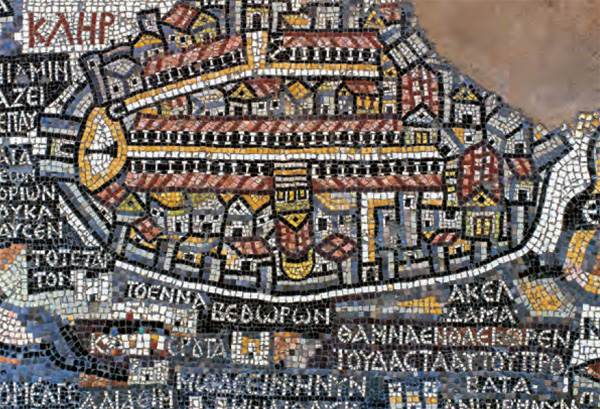Image Details

Garo Nalbandian
MARGINALIZED AT MADABA. The eastern cardo continued in use in the Byzantine period much as it had before. In the ovoid depiction of Jerusalem on the sixth-century C.E. Madaba map mosaic, the eastern cardo is represented as a line of white and yellow tiles next to a red-roofed colonnade near the top (the eastern side) of the city. The colonnade is only on one side. The western cardo runs from the Damascus Gate in the north (at left) through the center of the city, flanked by colonnades on both sides. The western colonnade, which led past the Church of the Holy Sepulchre (depicted upside down at the center of the mosaic) to the Nea Church (the large red-roofed building at far right), was given greater prominence in this Christian depiction of the city. The recent excavations now show, however, that the eastern cardo was of equal width to the western cardo in the Byzantine period; both were approximately 60 feet wide and both had two colonnades.
